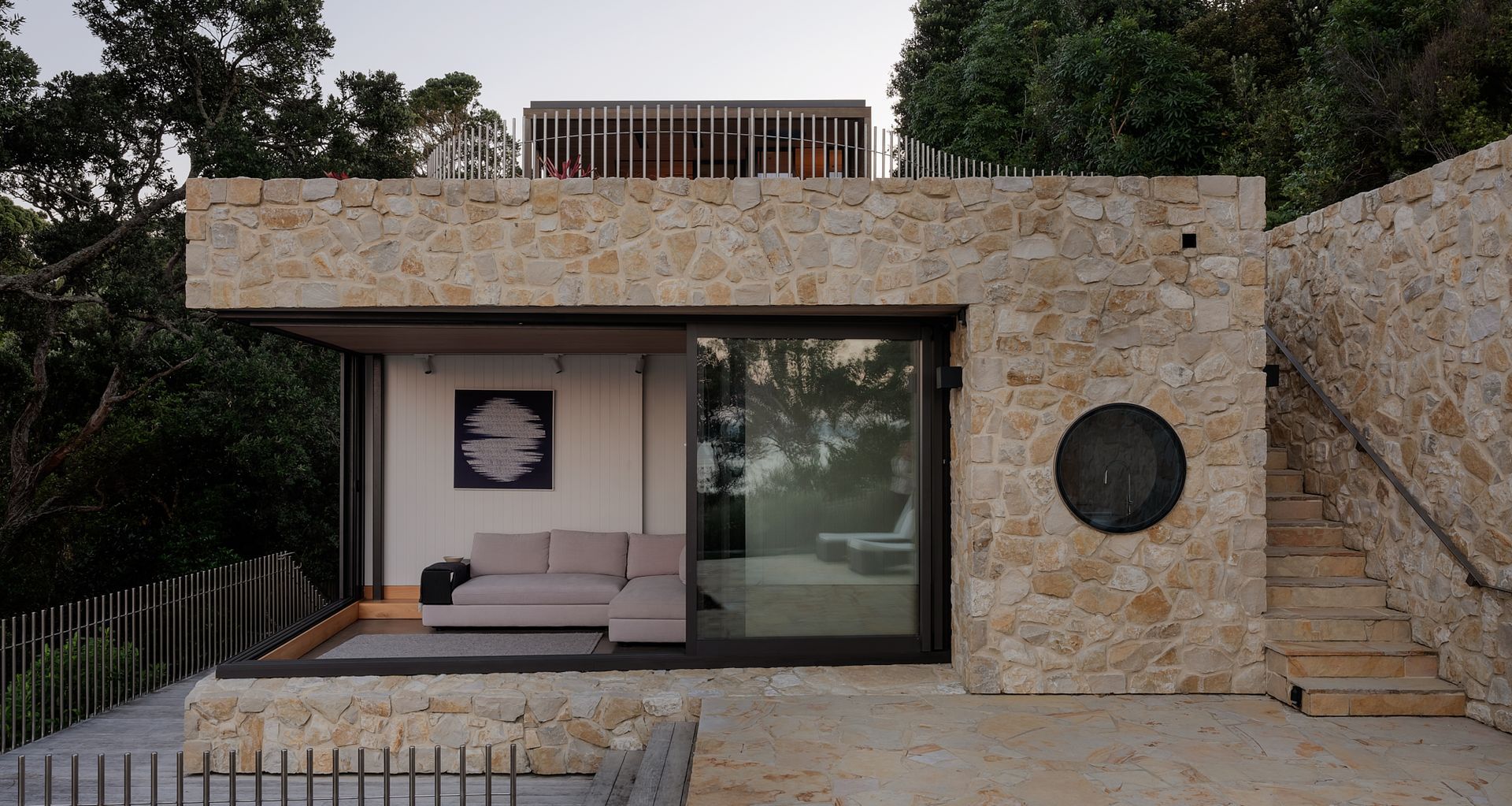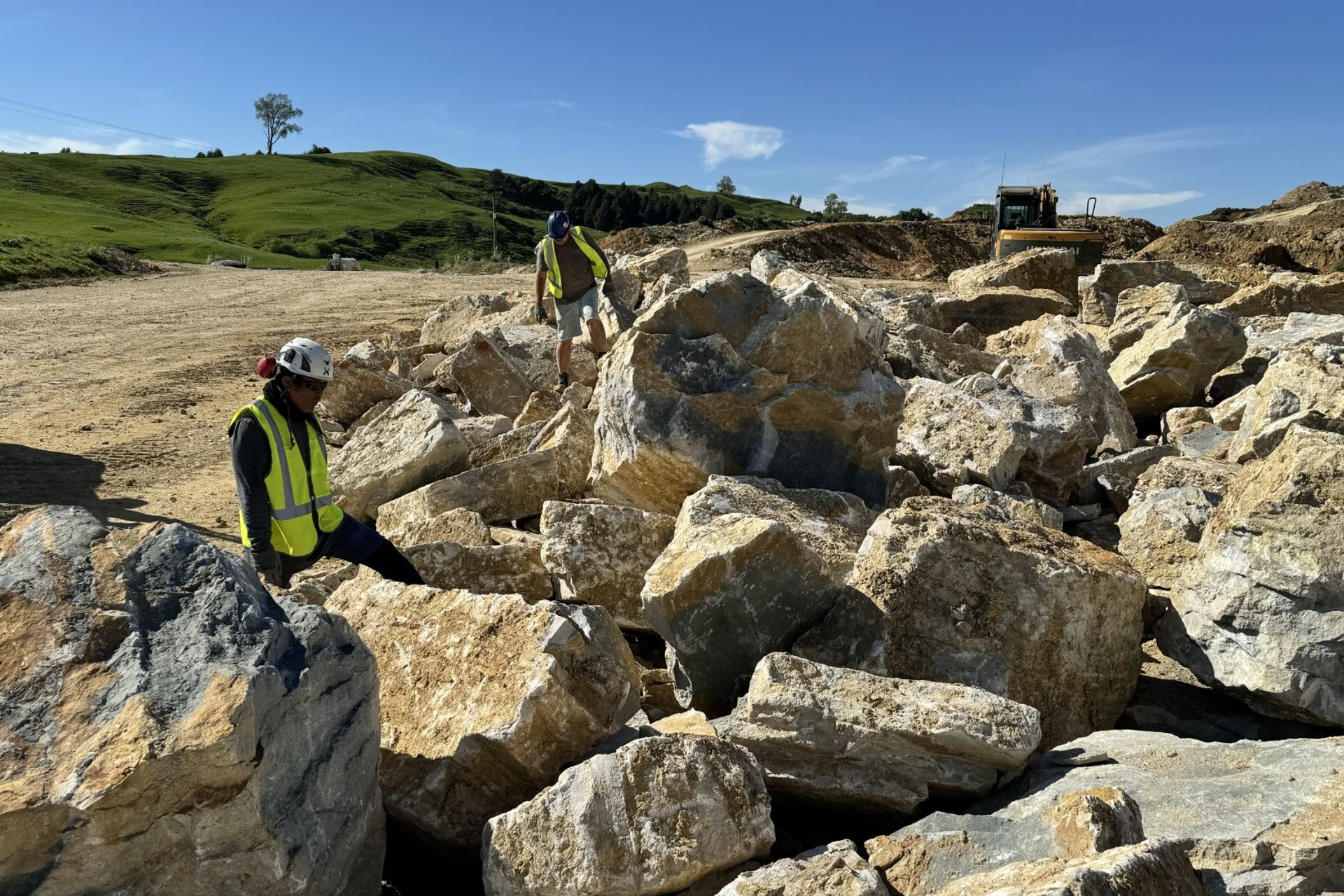The benefits of stone cladding and what you need to know when specifying it
Written by
23 October 2024
•
6 min read


Stone is one of the most timeless and durable materials you can choose for a building’s cladding; not only is it aesthetically stunning, it also anchors a building in its environment, giving a sense of place and history.
To incorporate stone cladding in a project, there are multiple options available, including solid and lightweight stone claddings. An expert in stone cladding, Island Stone developed a lightweight stone cladding offering nearly 20 years ago, using primarily New Zealand stone sourced directly from local quarries and processed to a nominal thickness of 40mm. This product combines the unmistakable look and feel of natural stone with a lightweight cladding that is suited to a variety of applications.
To understand the benefits of natural stone cladding and what users need to know about specifying stone, we spoke to Island Stone’s Peter Flint and Grant Antram who shared key considerations and tips.

The benefits of stone cladding
The most obvious benefit of stone as a cladding material is that it’s very durable, and selecting a quality natural stone product means you’ve essentially got a cladding for life, shares Peter, owner of Island Stone.
“It’s beautiful if it’s done to a high standard with a premium product, laid by an experienced installer.”
Being a natural material, there’s also a strong emotional aspect attached to stone cladding.
“Real stone is tactile as well as visual,” Peter observes. “It’s unquestionably natural to look at, but people are also drawn to touch and feel it."
Choosing a local stone cladding can connect the building and those who inhabit it to the land, a connection that is often lacking in today’s high-tech world. “Aesthetics are important but there’s an intrinsically deeper meaning to stone. It comes from the fact that it has been millions of years in the making, there’s a story to how it got here.”
One example of stone giving relevance to architecture, is an Australian couple who have enjoyed many family holidays in Queenstown and are building their dream home in Canberra.
“They couldn’t settle on any of the stone cladding options the builder showed them. They wanted something that connected them to the land and area they love and have such fond memories of. So, we are processing their choice of Central Otago schist into a lightweight cladding to send over,” says Peter. “They are absolutely thrilled.”
Natural stone is incredibly versatile as a cladding and is as much at home in a contemporary building as it is in a traditional one. Different stone varieties offer different colours and shapes and different lay styles can also vary the look – from dry stack (no mortar between the stone) to a bagged finish (a lot of mortar between the stone).
Island Stone has worked hard over the last 20 years at building relationships with quarries throughout New Zealand. This has benefited their lightweight stone cladding offering, with more New Zealand stones than ever in their range as well as the ability to blend different stones from different quarries to provide a customised look, adding to its versatility.
It also enables Island Stone to complement other cladding products. “While stone looks stunning in its own right, it also works well with other building materials,” says Peter. Stone and timber are natural partners, it pairs well with stucco and provides a dramatic contrast with steel and aluminium claddings.
“We have some pretty innovative plans come across our desk – it’s exciting to be a part of these projects and contribute to having some New Zealand stone in landmark buildings that will be around for a long time to come”.


What you need to know when specifying stone cladding
Selecting the type of stone for your project is an exciting part of the process, says Grant Antram, head of New Zealand stone cladding. Island Stone’s range of New Zealand stone claddings includes schist from Central Otago and Westland, limestone from a variety of North Island quarries, Auckland basalt, and, more recently, Charleston limestone from the South Island’s West Coast.
“Colour is most often where people start,” says Grant. “With New Zealand stone it can also be about sourcing stone from a particular area, and we can help with that.” The beauty of stone is that it can be shaped to a degree to achieve a particular look. “For example, we can shape some limestones to a more square-blocky look which is sometimes asked for.”
Island Stone offers expert advice on achieving the look you want within the parameters of your budget, design and location.
Weight is also a huge factor in specifying stone. The key is to design the structure and substrates around the stone cladding, because it’s difficult to retrofit stone to an existing structure, or even swap stone cladding system types after the structure is designed. “It’s obviously ideal to have it all worked out at the start,” observes Grant. “We are more than happy to talk with architects and builders at the early stages of a project as they’re always very worthwhile conversations.”
Speaking of substrates, if the stone is exterior and forms part of the building envelope, then waterproofing is required, notes Grant. “We often refer to our lightweight stone cladding as a ‘system’,” says Grant. “It’s more than just the cladding itself, we have developed and tested a full installation system from the waterproofing of the substrate through to installation of the stone.”
Finally, detailing is another consideration. Walls and corners are fairly straightforward, but other, more specialised detailing can be achieved with stone that really elevates the project. Everything from lintels, stone sills and mantels to fireplace hearths and landscape boulders.
“There’s a lot we can do, and we have the drawings to support most of it. If not, we have the ability to create drawings for a specific detail.” The key, stresses Grant, is early planning and consultation. “Knowing what the customer wants to achieve means we can advise on how best to make it happen and create the detail specific to this, so you get something that you know will work and that will pass easily through the consenting process.”
Explore stunning projects using stone cladding from Island Stone